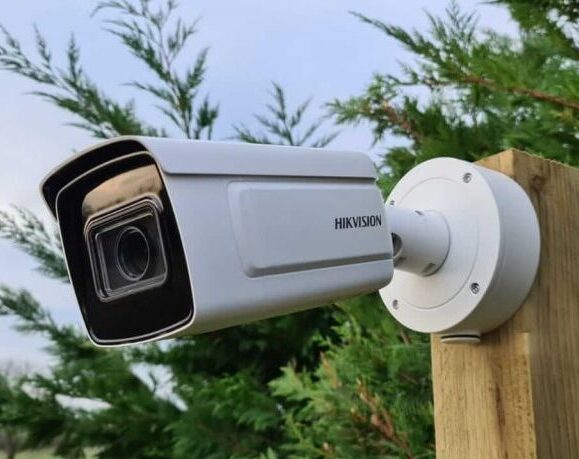When it comes to securing your business, CCTV cameras are an indispensable tool. However, simply installing cameras isn’t enough to ensure maximum security. The key to an effective surveillance system lies in strategic camera placement. Proper placement can help you monitor critical areas, deter crime, and collect vital evidence in the event of an incident. In this article, we’ll discuss the best CCTV camera placements for businesses, ensuring optimal coverage for maximum security.
The Importance of Strategic CCTV Camera Placement
CCTV cameras serve as both a deterrent and a monitoring tool for businesses, but their effectiveness depends largely on where they are positioned. A well-designed CCTV system provides coverage for all vulnerable areas, minimizes blind spots, and captures clear, actionable footage in case of incidents. Whether you operate a small retail store, a large warehouse, or an office building, understanding the best places to install your cameras is crucial for keeping your premises secure.
Benefits of Proper Camera Placement:
- Enhanced coverage: Strategic placement ensures all areas of your business are monitored effectively, leaving no blind spots.
- Deterrence: Visible cameras in key locations deter potential criminals or malicious employees from attempting theft or vandalism.
- Evidence collection: Well-positioned cameras provide clear and usable footage for legal or insurance purposes.
- Efficient monitoring: Proper placement reduces the number of cameras needed, while still ensuring comprehensive surveillance.
Best CCTV Camera Placements for Different Business Areas
The optimal placement of CCTV cameras varies depending on the layout and type of business you run. Below, we’ll explore the best camera placements for different areas of your business to achieve comprehensive security coverage.
Main Entrance and Exit
The entrances and exits of your business are among the most important areas to monitor. These are the first places where both employees and customers enter and exit, making them high-traffic zones with increased risk of theft, unauthorized access, or vandalism. Placing a CCTV camera at each entrance ensures that you capture the identity of anyone who enters or leaves the building, as well as any suspicious activity.
Cameras placed at the entrances should be positioned at eye level to capture clear facial images. Additionally, make sure the camera is wide enough to cover the entire doorway and surrounding area.
Key Considerations:
- Wide-angle coverage: Ensure the camera captures not only the entrance but also the surrounding area.
- Clear visibility: Place the camera at an appropriate height to capture clear facial features.
- Proper lighting: Ensure adequate lighting at night or in dimly lit areas to enhance camera performance.
Cash Registers and Point-of-Sale (POS) Systems
For retail businesses, one of the most vulnerable areas for theft is the cash register or point-of-sale (POS) system. Employees may be tempted to steal money or goods during transactions, and customers may attempt to engage in fraudulent activities such as switching prices or returns.
Placing CCTV cameras directly above the cash registers and POS systems allows you to monitor transactions and employee-customer interactions. This not only helps prevent theft but also provides valuable evidence in case of a dispute or claim.
Key Considerations:
- Clear coverage of the register: Position the camera to cover the entire cash register area, including the money drawer and the customer’s side.
- Recording transactions: A direct view of transactions can help resolve discrepancies, such as fraudulent returns or undercharging.
- Ensure employee privacy: Make sure the camera angle doesn’t invade personal space or monitor areas not related to transactions.
Storage Areas and Inventory Rooms
Inventory theft is a significant concern for many businesses, especially those in retail, wholesale, or manufacturing industries. By installing CCTV cameras in stockrooms, storage areas, and inventory rooms, you can monitor employee access and prevent unauthorized removal of goods or equipment.
Strategically placing cameras in these areas ensures that any suspicious activity, such as unauthorized entry or removal of items, is captured on video. It also helps ensure that employees follow the proper procedures when handling stock.
Key Considerations:
- Monitor access points: Place cameras at the entrance and exit of storage rooms to monitor who enters and exits.
- Wide-angle coverage: Position cameras to cover the entire room and capture any unauthorized activity or unusual behavior.
- Prevent blind spots: Ensure there are no areas in the room where items or employees can be hidden from view.
Parking Lot and Outdoor Areas
The exterior of your business is just as important as the interior when it comes to security. Parking lots, walkways, and outdoor spaces are prime locations for potential theft, vandalism, or other criminal activities. Installing CCTV cameras in these areas ensures that any suspicious activity outside the building is captured and recorded.
In parking lots, cameras should be installed high up to provide a wide-angle view of the entire lot, ensuring that the footage is clear enough to identify vehicles and individuals. If your business has a loading dock or any outdoor entrances, these areas should also be monitored to prevent unauthorized access.
Key Considerations:
- Wide coverage: Ensure cameras have a broad field of view to cover the entire parking lot or outdoor area.
- Nighttime visibility: Use cameras with infrared capabilities to capture clear footage in low-light conditions.
- Protection of blind spots: Position cameras to cover hidden corners or blind spots that criminals may use to their advantage.
Hallways and Stairwells
Hallways and stairwells are common areas that employees and visitors pass through on their way to various parts of the building. These areas are typically less monitored and can be targets for theft, vandalism, or even workplace violence. Installing CCTV cameras in these corridors allows you to monitor movement and detect any unusual or suspicious activity.
Cameras should be positioned to cover the entire length of the hallway or stairwell, including any entrances to rooms, offices, or storage areas. This ensures complete visibility and security in these high-traffic areas.
Key Considerations:
- Full coverage: Place cameras at both ends of the hallway or stairwell for comprehensive monitoring.
- Clear focus on doorways: Position cameras to capture entrances and exits to rooms or offices.
- Avoid privacy concerns: Ensure cameras do not infringe on employees’ personal spaces or bathrooms.
Offices and Workstations
For offices, workstations, or any areas where sensitive or confidential work is carried out, it’s important to strike a balance between monitoring security and respecting employee privacy. While you want to ensure that the workspace is secure, you should avoid over-monitoring employees in their personal workspace.
Install cameras in common areas like office entrances, meeting rooms, and near access points. This will help monitor any unauthorized access or suspicious behavior without intruding on individual privacy.
Key Considerations:
- Focus on entrances: Position cameras near office doors or common areas rather than focusing on individual workstations.
- Monitor access points: Ensure cameras capture anyone entering or exiting the office to monitor unauthorized access.
- Respect privacy: Avoid placing cameras in personal or private spaces where employees may feel uncomfortable.
Server Rooms and Data Centers
For businesses that rely on sensitive data, such as financial institutions, tech firms, or healthcare providers, securing server rooms and data centers is of paramount importance. These areas house critical systems and equipment that could be targeted for theft or sabotage.
Installing CCTV cameras in server rooms ensures that only authorized personnel have access to these critical systems. The footage can also serve as evidence in case of a security breach or other unauthorized activities.
Key Considerations:
- Access control: Place cameras to monitor who enters and exits the server room or data center.
- Continuous surveillance: Install cameras with the capability for 24/7 monitoring to ensure that any irregular activity is captured in real-time.
- Protection of sensitive equipment: Ensure that cameras focus on monitoring access to the room and do not infringe on the privacy of the data.
Proper CCTV camera placement is essential for maximizing the security of your business. By strategically placing cameras in key areas such as entrances, cash registers, storage rooms, parking lots, and offices, you can protect your assets, deter criminal activity, and improve workplace safety. Remember to consider factors such as coverage, visibility, and employee privacy when deciding where to place your cameras.
The effectiveness of your CCTV system will largely depend on its design and implementation. Ensure that your cameras are positioned to eliminate blind spots, capture clear footage, and provide comprehensive coverage of your premises. By taking the time to plan and install your CCTV system strategically, you can provide maximum security for your business, employees, and customers.











